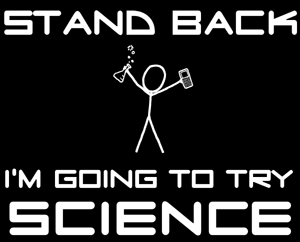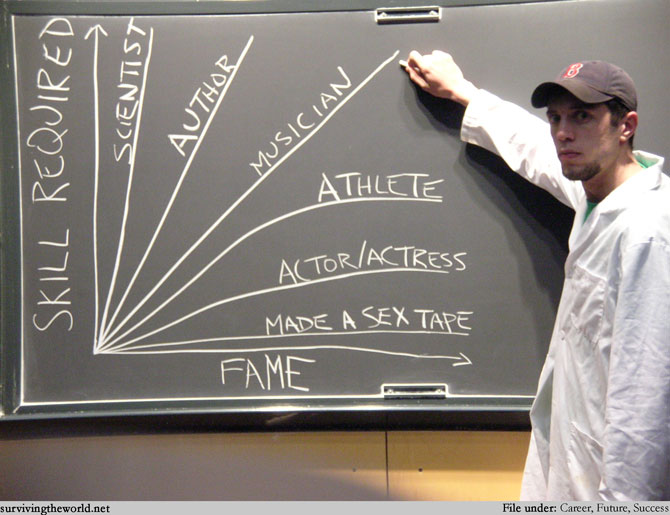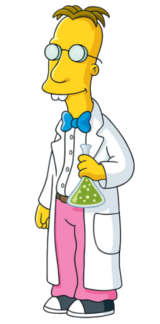So far, we've talked about
science in the film and given some examples of
what good science movies look like. Now for the fun part. What differentiates the good films from the bad is simply effort. The good films take a few minutes to think about the universe that they inhabit and make an effort to ponder the implications of their ideas. The bad films have gorilla human hybrids and super giant diamonds in the Earth's crust.
 Congo.
Congo. The movie involves gorilla/human hybrids. Gorilla… Human… hybrids. That’s right. You heard me. I mean, you probably don’t want to think about how these Humorillas were made but apparently they exist somewhere in Africa. But don’t worry, they have a purpose, which is to guard the magical blue diamonds, which can be used to make super lasers. Oh, and the characters eventually make diamond based Humorilla killing super lasers. I don’t think we need to know anything else.
 The Day after Tomorrow.
The Day after Tomorrow. You know it’s a bad sign when NASA (who, let’s be honest, could probably use a publicity bump) publicly disavows a movie. So what’s wrong? For one thing, it would require most of Antarctica to melt in order to submerge New York City to the level it is in the movie. If all the rays of the sun were directed at the South Pole, its ice would melt in about two and half years. Naturally, in the movie, this occurs in a couple of days. Duke University paleoclimatologist William Hyde said it best, "This movie is to climate science as Frankenstein is to heart transplant surgery."
 Outbreak.
Outbreak. While everyone loves this movie, (I do too) there is a glaringly bad science created hole in the plot. Ok, 2 holes. 1. No virus this deadly, with this accelerated a life cycle, would survive for long, because it would burn through its food supply (us) far quicker than is sustainable. Even the Spanish flu of 1918 which killed between 50 and 100 million people spotted you a couple weeks before you died. 2. You can’t make a vaccine or a cure for a disease this deadly in field lab in about 20 minutes. I don’t care if you have the outbreak monkey’s blood. It's fair to say that vaccines cannot be produced in less time than it takes to watch an episode of The Simpsons. Great movie. Bad science.
 The Core.
The Core. It’s not original to say this movie is terrible. It’s also not original to say that the science in this movie is somewhere below sub-moronic. However, it’s also not original to say that ice cream is good, but that doesn’t make it any less true. A list of my personal favorite scientific nonsense from this piece of utter dreck…
- The core of the earth stops spinning. AND THIS IS KEPT A SECRET??? Now, I am no physicist, but I’m fairly certain that something like this might show up with simple science equipment like, you know, a compass.
- We’re all going to die because when the core stops spinning we’ll lose Earth’s magnetic field which means that we’ll be exposed to deadly microwave radiation that will cook us all TO DEATH! Leaving aside everything else, try deflecting radiation with a magnet. I’ll wait. Oh wait, no I won’t, because it doesn’t work and I’ll have to wait forever.
- The solution is of course blow up nuclear weapons inside the core. No, really, that’s the solution. So a couple of nuclear weapons (which couldn’t possibly produce enough energy) will hit the core and just start it spinning? Is it like a reset button?
- The ship which will of course tunnel to the center of the earth with movie magic lasers and somehow use MRI TO STEER A SHIP THROUGH SOLID ROCK.
- They’re in radio contact with the surface. While several thousand miles deep into the center of the earth. My cell phone barely works in the basement.
- At one point the ship runs into a “giant diamond” in the middle of the earth
- One of the scientists handles a plutonium fuel rod from an active reactor without a helmet to minimal consequences.
Oh, and it is 2+ hours long. Enjoy.
Look, it is just not that hard to include halfway competent science in a movie. Just a little bit of attention to detail is really
all that separates Gattaca from The Core. Ok, there are a lot of things that separate
Gattaca from
The Core, but most of that has to do with plot, direction, acting and cinematography. The point is that when the effort is made, movies can respect science and still be entertaining and futuristic. Or they can steer a train through solid rock with lasers and an MRI.
Other great discussions of science and culture can be found at:
Bad ScienceInsultingly Stupid Movie PhysicsUSA Today article on Science in FilmThis is Part 3 in the New Voices series on Science in the Movies.
Part 1 - Science in FilmPart 2 - Top 5 Science Movies
 If you’re like me, then there’s nothing more entertaining to you then seeing scientists put on shiny suits and ties and then pose awkwardly with various famous musicians.
If you’re like me, then there’s nothing more entertaining to you then seeing scientists put on shiny suits and ties and then pose awkwardly with various famous musicians.


























 While this was an interesting experience, it raised a larger question: is this really the most effective way to prevent a public health crisis? Considering the fact that there is rarely antibacterial soap in any restroom in China, hand sanitizer is not provided in public areas, and many Chinese citizens readily spit in public, I question whether the resources spent to screen an entire plane could be spent more wisely on public health initiatives to prevent the spread of disease.
While this was an interesting experience, it raised a larger question: is this really the most effective way to prevent a public health crisis? Considering the fact that there is rarely antibacterial soap in any restroom in China, hand sanitizer is not provided in public areas, and many Chinese citizens readily spit in public, I question whether the resources spent to screen an entire plane could be spent more wisely on public health initiatives to prevent the spread of disease.  Before I arrived in China there had only been a few documented cases of H1N1, so apparently the Chinese method of keeping H1N1 from entering the country has been effective so far. This seemed like a “wall” approach. If the country could keep H1N1 out, there wouldn’t be a problem. But what happens if the “wall” develops a crack? Without the internal infrastructure (antibacterial soap, hand sanitizer, hygiene) in place, China is taking a huge gamble with the health of its citizens. I’d argue that in addition to keeping H1N1 out of China, the government should also work to develop internal measures to prevent the spread of the virus in the event that H1N1 or a mutated form does enter the country.
Before I arrived in China there had only been a few documented cases of H1N1, so apparently the Chinese method of keeping H1N1 from entering the country has been effective so far. This seemed like a “wall” approach. If the country could keep H1N1 out, there wouldn’t be a problem. But what happens if the “wall” develops a crack? Without the internal infrastructure (antibacterial soap, hand sanitizer, hygiene) in place, China is taking a huge gamble with the health of its citizens. I’d argue that in addition to keeping H1N1 out of China, the government should also work to develop internal measures to prevent the spread of the virus in the event that H1N1 or a mutated form does enter the country.












